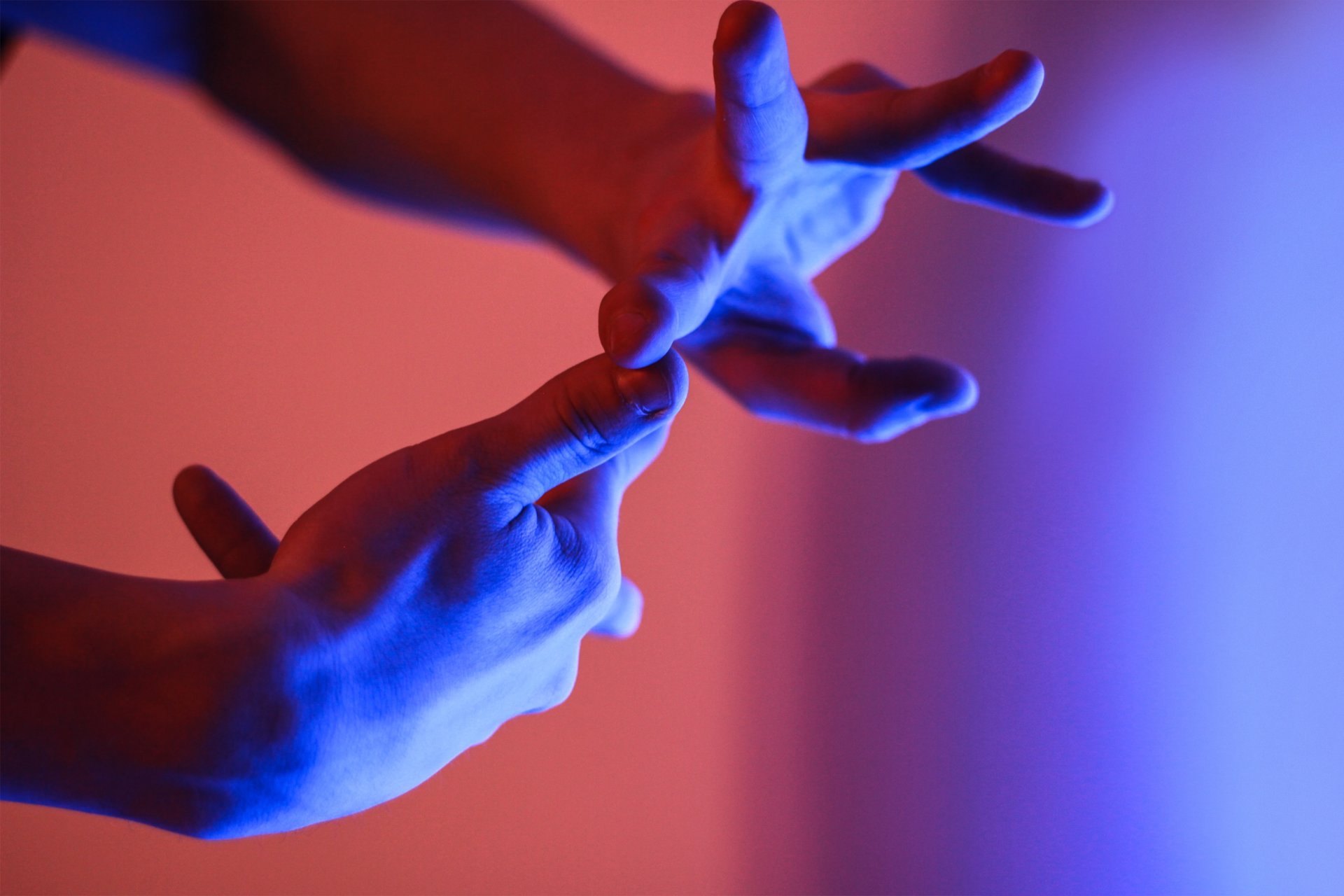
8 popular beliefs about deaf people
- Deaf people? There are none in my town
- The deaf hear nothing
- Deaf people need sign language to communicate
- You can shout to be heard
- You can just write to communicate with a deaf person
- Deaf people can read lips
- The deaf are also mute
- Sign language is an international language
Deaf people have long been marginalized. Sign language was even banned for decades. Today, deaf people want to live an ordinary life within society. Who are they? What are their needs and how can they feel welcomed within public places? Let’s toss aside our prejudices and see what we can all do in our own way!
As a bonus, you might discover some small but surprising facts.
1. Deaf people? There are none in my town
That’s what you think, for good reason. Deafness is an invisible disability, like 80% of all other disabilities. According to the WHO, hearing loss afflicts over 5% of the world’s population and one-third of people over 65. It generally occurs due to age or prolonged exposure to noise.
2. The deaf hear nothing
There is actually a small minority among deaf people who cannot hear anything.
A hearing impairment extends from a simple difficulty in understanding a conversation between several people to a complete loss of hearing. Less than 5% of people with a hearing impairment are completely deaf.
Even a person with profound deafness can perceive certain sounds. However, that does not mean that such sounds are of any use to them.
3. Deaf people need sign language to communicate
Sign language is certainly essential for those who use it. It is their first language and communicating with them through it is the best way to ensure they understand the message. But only approximately 5% of deaf people rely on sign language.
To facilitate the access and use of services by the deaf and hard of hearing, the following should be ensured first and foremost:
⊗ Good lighting;
⊗ The absence of light effects causing silhouettes, especially at the reception desk;
⊗ The addition of a visual display with text, images and icons to accompany PA announcements;
⊗ Amplifier systems or hearing induction loops;
⊗ The availability of writing or drawing materials;
⊗ Trained staff.
4. You can shout to be heard
This is certainly the last thing that you should do.
A deaf person is deaf. Yelling is pointless, their hearing will not suddenly be restored!
Even if they can perceive some sounds or have a hearing aid, shouting deforms the mouth and makes lip reading more difficult. Just make the effort to speak clearly, not too quickly and enunciate without exaggeration.
5. You can just write to communicate with a deaf person
This often makes things easier but it is far from being an all-purpose solution.
Obviously, writing is the best solution for those who lost their hearing after they learned to read. If your job involves greeting the public, always have a pen and paper handy.
However, illiteracy is very common among deaf people. While statistics show that things are changing for the better in terms of teaching methods for the deaf, learning to read remains a long and difficult process for those who cannot hear because they are unable to associate letters with their sounds. So, writing is not always the preferred method of communication for the deaf.
6. Deaf people can read lips
Reading lips is indeed one of the main compensations derived from the loss of hearing. But like writing, it is not solution that applies to all deaf people. It is once again a question of learning. In any case, only a part of the message is received. Try adding explicit gestures to your words and reformulate the wording if necessary.
Lip reading requires the speaker to have their face unobstructed, and well-lit with no shadows. Chewing gum or even having a mustache can make reading lips more difficult. Lipstick helps though. But not everyone can pull off makeup.
7. The deaf are also mute
This may be the case but it is certainly not a given.
Deafness does not affect the vocal cords. If some deaf people don’t speak, it might be because they never learned or they choose not to speak for fear of being judged or misunderstood.
Imagine having to repeat something you did not hear. This is the problem faced by deaf children. And the reason learning to speak is far more difficult for them and requires prolonged sessions with a speech therapist. Yet, it is possible!
Many deaf people can speak (especially young people and those who lost their hearing after having learned how to speak) and even very clearly.
Hearing Impaired People: a Multitude of Profiles for Different Needs
8. Sign language is an international language
No, it isn’t. Every country has their own sign language.
Sign language is a true language with its own vocabulary, grammar and syntax. If deaf people have an advantage over the hearing, it is that they can communicate with someone from another country a lot quicker. There are fewer differences between two sign languages than there are between two spoken languages.
Incidentally, two countries with the same spoken language, the United Kingdom and the United States, do not share the same sign language.
If you like this article, read this one: 8 Clichés About Blind People
There are many clichés about the deaf and those mentioned here are just a sample. You will find other articles about hearing impairment and other disabilities in our blog.
Discover What You Need to Do to Ensure Accessibility for Deaf People at Public Venues!
Updated on January 18th, 2022 / Published on May 10th, 2019
media

A deaf person is deaf. Yelling is pointless, their hearing will not suddenly be restored!
writer

Lise Wagner
Accessibility Expert
stay updated
Get the latest news about accessibility and the Smart City.
other articles for you

Open Data Is Key to Fostering Universal Accessibility
Open data represents an opportunity for cities to reach universal accessibility. It shows the missing links of the mobility chain.
Our Audio Beacons Guide the Blind and Visually Impaired at the Helsinki Subway
The Helsinky subway improved their audio signage system by installing on demand and remotely activated audio beacons.
7 Good Reasons to Install Audio Beacons at Your Public Transport Network
Audio beacons are an efficient way to provide more autonomy to blind and visually impaired people. They can easily use public transport.

Will Remote Activation Become the Norm for Accessible Pedestrian Signals?
More and more cities like New York have been exploring remote activation to trigger accessible pedestrian signals.
share our article!
more articles

Disability Statistics in the US: Looking Beyond Figures for an Accessible and Inclusive Society
Disability Statistics in the US: Looking Beyond Figures for an Accessible and Inclusive Society Around 61 million adults in the United States live with a disability. Diving into disability statistics in the US will help us know exactly who is concerned and what...
Our Audio Beacons Guide the Blind and Visually Impaired at the Helsinki Subway
Our Audio Beacons Guide the Blind and Visually Impaired at the Helsinki SubwayOur audio beacons equip the new line of the Helsinki subway in Finland. They help blind and visually impaired people locate the points of interest of a station. For users with visual...

Will Remote Activation Become the Norm for Accessible Pedestrian Signals?
Will Remote Activation Become the Norm for Accessible Pedestrian Signals?Without pushbutton, there are no accessible pedestrian signals. That’s how APS work in the U.S. But more and more cities have been exploring remote activation like New York City. The Department...

Hearing Impaired People: a Multitude of Profiles for Different Needs
Hearing Impaired People: a Multitude of Profiles for Different Needs Did you know that hearing impaired people have several profiles and that the way they identify themselves is important? You may be familiar with deaf and hard of hearing people but for each of...
NEVER miss the latest news about the Smart City.
Sign up now for our newsletter.
Unsubscribe in one click. The information collected is confidential and kept safe.
powered by okeenea
The French leading company
on the accessibility market.
For more than 25 years, we have been developing architectural access solutions for buildings and streets. Everyday, we rethink today’s cities to transform them in smart cities accessible to everyone.
By creating solutions ever more tailored to the needs of people with disabilities, we push the limits, constantly improve the urban life and make the cities more enjoyable for the growing majority.


